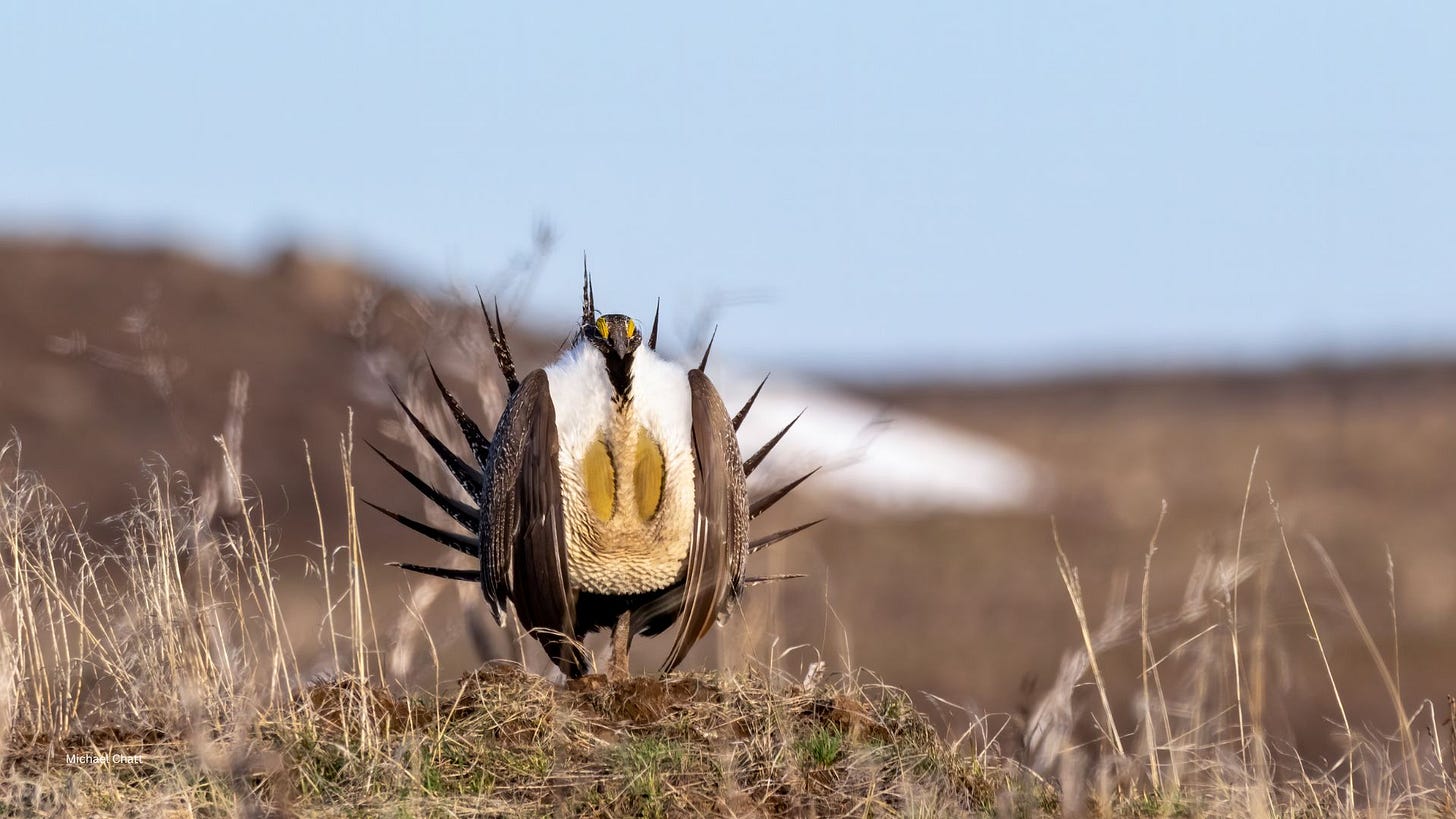Extinction on the Secretary's Watch: North Dakota Loses Its Last Sage Grouse
As sagebrush ecosystems collapse under political neglect and industrial pressure, North Dakota becomes the second U.S. state to lose its greater sage grouse entirely.
For the first time since the 1950s, a U.S. state appears to have lost its entire population of greater sage grouse. North Dakota—a place once brushed with the soft drumming of courting males at dawn—now reports zero birds during its 2025 spring lek surveys. Not one.
And it happened on the watch of Doug Burgum, former governor of North Dakota and now Secretary of the Interior in the Trump-Vance administration.
This is what extinction looks like in real time. Not a sudden collapse, but a slow suffocation—delivered by unchecked energy development, fragmented habitat, wildfire, drought, invasive species, and years of political denial. North Dakota tried transplanting grouse from Wyoming. It planted sagebrush. But none of that was enough to offset the relentless march of drilling rigs and livestock grazing and pipeline corridors.
Greater sage grouse once numbered in the millions, dancing across the sagebrush steppe from California to the Dakotas, from southern Colorado to northern Montana. Today, their population is estimated at fewer than 200,000 individuals across 11 states. And their habitat is vanishing fast. According to the Western Association of Fish and Wildlife Agencies, we lose about 1.3 million acres of healthy sagebrush habitat every year.
These birds are more than a symbol of the West—they are the pulse of the sagebrush ecosystem. Where grouse thrive, so too do pronghorn, pygmy rabbits, mule deer, golden eagles, and hundreds of native plants and pollinators. When sage grouse disappear, it signals collapse far beyond a single species.
The 2015 federal sage grouse plans, developed under the Obama administration, were meant to stave off an Endangered Species Act listing by balancing conservation with land use. They established no-go zones for development around breeding grounds and prioritized habitat restoration.
Interior Secretary Burgum has not acknowledged the disappearance of sage grouse from his own state. Instead, earlier this year, he ordered the Bureau of Land Management to re-review and potentially revise all sage grouse protections—just as BLM was preparing to finalize updated management plans across the West. His rhetoric mirrors the worst of industry spin, describing habitat conservation as a “whole-cloth creation,” dismissing proposals to limit development in core habitat as government overreach.
Congress has long blocked the Fish and Wildlife Service from listing sage grouse under the Endangered Species Act, inserting a rider in appropriations bills year after year. This political interference has allowed state and federal agencies to sidestep meaningful action, kicking the can down the road while habitat loss accelerates. Today’s House appropriations bill includes not just barring sage grouse from receiving Endangered Species Act protections, but ensuring sage grouse planning that was done during the Biden Administration never gets implemented.
The collapse of North Dakota’s grouse population is a warning shot to every Western state. When protections are hollowed out, when extractive interests dictate land use policy, and when public lands are treated as sacrifice zones, the results are irreversible. Greater sage grouse are a bellwether species. When they disappear, it means the entire sagebrush ecosystem is unraveling.
This didn’t have to happen. But it was allowed to happen—by a system that rewards destruction, buries science, and sidelines conservation in favor of profit.
Arizona was the first state to lose its sage grouse. Now North Dakota has followed. If the Trump-Burgum administration continues on this path, they won’t be the last.
Grace Kuhn is the Digital Director for Western Watersheds Project. grace@westernwatersheds.org






What a tragedy to learn about. I truly love the arid lands, the sagebrush expanses and the ecosystem they support. America would not be America without them.
Humans, their livestock, and their works are so pointlessly destructive. The empty lands would be better off without them. If someone were to ask me mockingly, "Well, which would you prefer out here, people or those silly birds?" I would unhesitatingly reply, "Those birds."
Thanks Doug, extinction is FOREVER!!! 💔💔💔💔💔